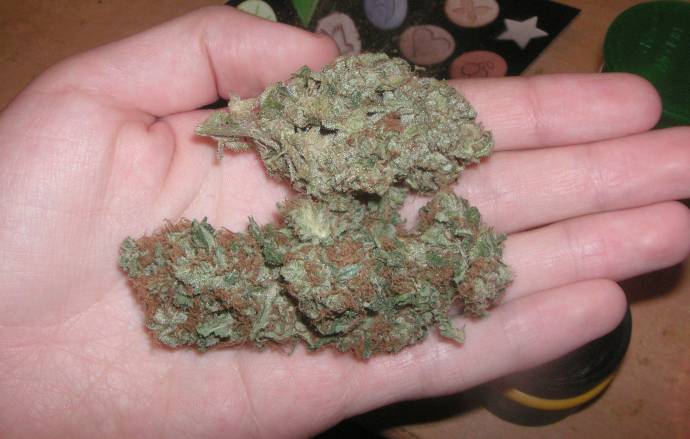Medicinal cannabis, also referred to as medical marijuana, has been utilised by humanity for thousands of years.
The therapeutic use of cannabis was first recorded in ancient Egyptian times, when it was used for relieving hemorrhoid pain. The Chinese used it to treat gout and malaria, the ancient Greeks for treating wounds and Indians utilized cannabis as a treatment for a wide variety of ailments; including headaches and gastrointestinal disorders, plus for pain relief.

In some cultures, cannabis continues to be an accepted and respected form of medicine.
Today, cannabis is being researched for use in the treatment and/or management of symptoms of conditions including:
- Crohn’s disease
- various forms of epilepsy
- multiple sclerosis
- dementia
- Parkinson’s disease
- Huntington’s chorea
- glaucoma
- Alzheimers
- cancer
- PTSD
- sleep disorders
- anxiety disorders
- eating disorders
Medicinal cannabis has proved to be particularly useful in alleviating some of the undesirable effects of chemotherapy in cancer patients; helping to suppress nausea and promote appetite. It has also been reportedly effective in managing certain types of chronic pain.
Many claims have been made regarding the benefits of medical marijuana, but much of it is anecdotal evidence to date; difficult to to prove or disprove in part due to restraints on scientific research imposed by hostile legislation in some countries.
Unfortunately, what is an incredibly and useful plant has been unfairly demonised, and this has been to the detriment of many of millions of people that could benefit from its regulated use to relieve suffering and to treat symptoms.
Thankfully, this is slowly starting to change and research on medicinal cannabis is picking up pace. For example, California was the first American state to ban cannabis use in 1915, but was also the first to make medical cannabis legal again in 1996.
Cannabinoids And Human Health
At least 85 different chemical compounds called cannabinoids have been isolated from the cannabis plant; many with medicinal properties.
Some of the better researched compounds include tetrahydrocannabinol (THC), cannabidiol (CBD) and cannabinol (CBN). Some of these mimic compounds produced in the human body called endocannabinoids.
Endocannabinoids are involved with numerous important functions in the human body – appetite, memory, pain control, stress response, immune response, sleep and thermoregulation.
Endocannabinoids are even found in breast milk and it’s believed these trigger hunger in an infant and promote growth and development.
If a sufficient amount of endocannabinoids are not produced in the human body, this then results in imbalance and the onset of various conditions.
When cannabis is consumed by patients with insufficient endocannabinoid production, the various cannabanoids bind to receptor sites in the body (cannabinoid receptor type-2 : CB2) and brain (cannabinoid receptor type-1 : CB1) ; hence the claimed medicinal effect and restoration of balance within the body.
Cannabis does not have to be smoked for its potential therapeutic properties to be harnessed – in fact, inhaling any burnt plant material can have detrimental long term effects as combustion can create carcinogens and other toxins. Cannabis smoke has also been implicated in respiratory dysfunction.
The advanced medical marijuana products of today can be vaporised (low temperature heating to release the cannabinoids), applied as ointment, inhaled as a spray or consumed as tablets, liquids or edibles.
The risk of addiction to or dependence on THC based medicinal cannabis appears to be far less than with some other pain-killer drugs and it’s believed this plant could help address the growing opioid crisis wreaking havoc on communities around the world.
Not just any marijuana can be used for therapeutic applications – plants best suited to pharmaceutical products have been purpose-bred. For example, cannabidiol (CBD) is thought to be effective in treating or managing certain conditions such as some forms of childhood epilepsy, so strains of plants high in cannabidiol have been developed. Cannabidiol doesn’t have any psychotropic effect.
Cannabidiol is also present in viable quantities in industrial hemp; the non-intoxicating cousin of marijuana.
THC has reportedly proven effective in treating or managing conditions including nausea, appetite issues, intractable pain and some epileptic conditions, and various medications using this cannabinoid as the major active compound have been developed.
What Is The Entourage Effect?
The entourage effect is a term that was coined by S. Ben-Shabat and Raphael Mechoulam in a 1998 paper to describe a concept that the efficacy of medical cannabis treatment may not just be confined to the beneficial properties of a specific cannabinoid such as THC or CBD, but how multiple compounds from the plant may work together.
In addition to cannabinoids, terpenoids may also play a role in the therapeutic potential of cannabis. Terpenoids are compounds that give plants their aromatic and flavour qualities.
Medical Marijuana – Hurdles Remain
The recreational versus medical applications of cannabis are in many ways poles apart. Medical marijuana of the future will be well-regulated, highly-refined, be of consistent quality and finally, legally accessible and accepted in mainstream western society.
But there are some hurdles that need to be cleared. Complicating the issue somewhat aside from prejudice and “alternative facts” is cannabis is included in Schedule IV of the United Nations’ Single Convention on Narcotic Drugs. However, each signatory country is able to allow medical and scientific purposes.
Medicinal cannabis products containing THC have been legalised in Austria, Belgium, Canada, Czech Republic, Finland, Israel, Netherlands, Spain, the UK and some US states.
CBD based medicines, assuming they have negligible THC content, are now legal in dozens of countries. Cannabidiol has had an easier time in gaining regulatory approval due to its lack of impact on cognitive abilities; but some countries are still resistant.
Clinical trials are now occurring in various countries, including Australia; which also passed legislation in 2016 to legalise medical cannabis. However, several years after laws were passed, getting medications into the hands of patients was still slow and cost-prohibitive. Some of these patients were and are willingly risking prosecution in order to continue sourcing the medications they desperately need. In more recent years, ability to access cannabis medicines in Australia legally has improved, but they are still quite expensive.
Many companies have seen the huge pharmaceutical potential of the plant and are now racing to join the medical cannabis revolution, which could be one of the most significant advancements in health care in the 21st century.

